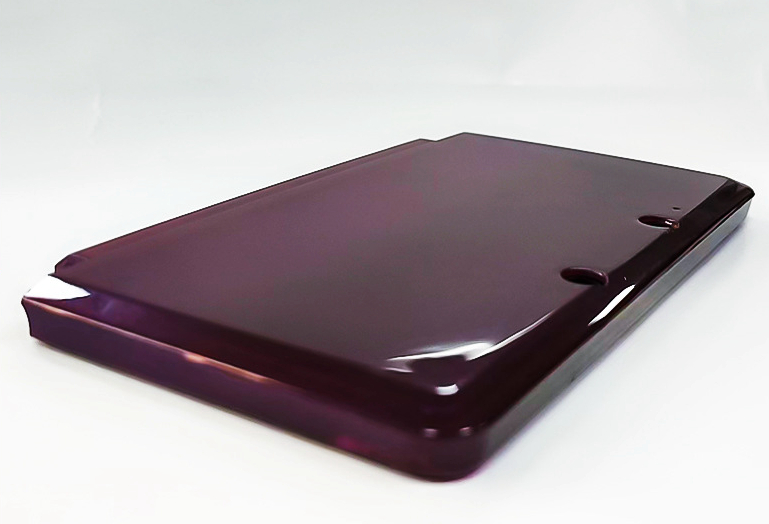Clear Coating Aluminum Die Castings: Preserving the Metallic Finish and Adding Protection
Introduction
Aluminum die castings are prized for their lightweight strength, excellent formability, and sleek metallic appearance. However, their surfaces are prone to oxidation, corrosion, and wear, especially when exposed to moisture, industrial chemicals, or handling during use. Clear coating offers a solution by applying a transparent protective film that seals the casting surface while preserving its natural finish. Clear coatings are used in both functional and decorative applications and extend the life and visual quality of components made from alloys such as A380, A413, and AC4C.
At Neway, clear coatings are applied as part of our post-processing services, ensuring our aluminum die castings maintain performance and aesthetic value in demanding environments.
What Is Clear Coating?
Clear coating is a finishing process where a thin, transparent layer—typically polyurethane, acrylic, epoxy, or powder-based resin—is applied to the surface of a metal casting. This layer provides a physical and chemical barrier against environmental degradation while enhancing surface reflectivity or depth.
Common Clear Coating Materials
Coating Type | Key Features | Common Uses |
|---|---|---|
Acrylic | UV-resistant, fast-drying, good clarity | Indoor/outdoor decorative parts |
Polyurethane | Excellent abrasion and chemical resistance | High-durability industrial or consumer parts |
Epoxy | Strong adhesion, good chemical resistance | Indoor technical components |
Clear Powder Coating | Durable, solvent-free, uniform finish | Mass production, automotive, electronics |
Film thickness typically ranges from 15 to 50 microns, with options for matte, semi-gloss, or high-gloss finishes depending on the product requirements.
Benefits of Clear Coating Aluminum Die Castings
Benefit | Description | Application Impact |
|---|---|---|
Corrosion Resistance | Seals pores and prevents oxidation or pitting | Increases service life in humid, marine, or industrial settings |
Scratch and Wear Protection | Adds a physical barrier against abrasion | Ideal for high-contact parts such as enclosures or handles |
Preserved Appearance | Maintains metallic color and finish without discoloration | Suitable for consumer electronics and decorative hardware |
Surface Uniformity | Reduces visual inconsistencies or minor imperfections | Enhances visual appeal in exposed or premium parts |
For instance, clear-coated A380 housings used in automotive sensor covers have shown >500 hours of salt spray resistance (ASTM B117), even in aggressive under-hood environments.
Application Process
Clear coating is typically applied using one of the following methods, depending on part geometry and production volume:
Spray Coating – Manual or automated, suitable for small-to-medium batch parts
Dip Coating – Full-immersion method for complex or high-coverage parts
Electrostatic Powder Coating – Applied using charged particles and oven curing
Brush Application – Selective coating or touch-up on assembled parts
Before coating, castings undergo cleaning, degassing, and surface preparation (e.g., polishing or bead blasting) to ensure optimal adhesion and finish consistency.
Clear Coating vs. Other Aluminum Surface Treatments
Clear coating may be used in conjunction with or as an alternative to other surface protection methods:
Surface Treatment | Function | Visual Effect |
|---|---|---|
Oxide layer formation for corrosion resistance | Matte, colored, or clear finish | |
Passivation with minimal build-up | Subtle iridescence or clear tone | |
Metal layer deposition for hardness or conductivity | Silver, chrome, or decorative layers | |
Clear Coating | Transparent sealing layer | Preserves raw metallic or polished appearance |
Unlike anodizing or plating, clear coatings do not alter the metal structure or add color unless specifically formulated for tinting. This makes them ideal for maintaining the visual character of cast aluminum parts.
Use Cases and Applications
Clear-coated aluminum die castings are used across a range of industries where both protection and appearance are critical:
Automotive: Emblem backings, trim bezels, under-hood brackets
Consumer Electronics: Display frames, remote housing, speaker grilles
Appliances: Knobs, control bezels, brushed aluminum fascias
Industrial Equipment: Pneumatic covers, actuator bodies, control panels
In a case study involving A413 decorative castings for audio systems, clear coating reduced handling-related wear complaints by 40% and eliminated oxidation-related returns during a 12-month warranty period.
FAQs
What is the typical thickness of clear coatings on aluminum die castings?
Can clear coating be applied over polished or anodized aluminum surfaces?
How long does a clear coat last in outdoor environments?
Does clear coating affect dimensional tolerances of precision parts?
Can clear coatings be tinted or customized in gloss level?

